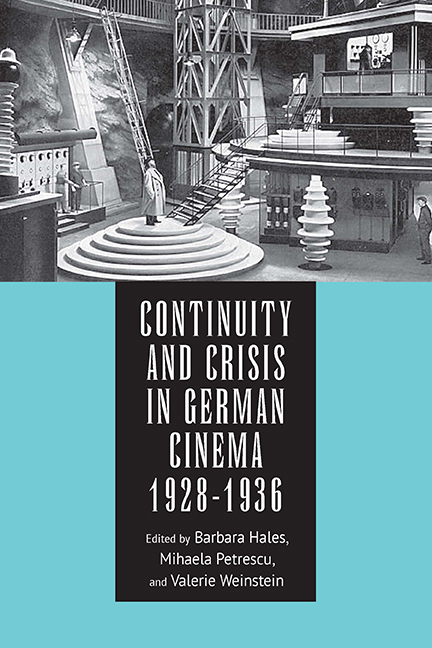Book contents
- Frontmatter
- Contents
- List of Illustrations
- Acknowledgments
- Introduction
- Part I Politics
- Part II The Economy
- Part III Concepts of Race and Ethnicity
- Part IV Genre Cinema
- Part V Making Cinema Stars
- Part VI Film Technologies
- Part VII German-International Film Relations
- Selected Bibliography
- Notes on the Contributors
- Index
10 - Foreign Attractions: Czech Stars and Ethnic Masquerade
Published online by Cambridge University Press: 08 May 2021
- Frontmatter
- Contents
- List of Illustrations
- Acknowledgments
- Introduction
- Part I Politics
- Part II The Economy
- Part III Concepts of Race and Ethnicity
- Part IV Genre Cinema
- Part V Making Cinema Stars
- Part VI Film Technologies
- Part VII German-International Film Relations
- Selected Bibliography
- Notes on the Contributors
- Index
Summary
ANNY ONDRA AND LÍDA BAAROVÁ were the biggest stars of Czech origin at work in the German film industry of the 1930s. Ondra's star trajectory in German cinema began in the early 1920s and she continued to play lead roles opposite male stars such as Paul Hörbiger and Heinz Rühmann well into the latter years of the Third Reich, for example, in Der Scheidungsgrund (Grounds for Divorce, 1937) and Der Gasmann (The Gasman, 1941). By contrast, although Baarová also received top billing in a number of high-profile features, she was active in German cinema for only a few years. Her career in the Third Reich was cut short, just as it was beginning to take off, when she was banned from German films in the fallout from a scandalous affair with Joseph Goebbels. Ondra's and Baarová's popularity in Germany peaked in the mid-1930s, during which time each played the lead in big-budget Ufa productions. Both circulated heavily through the German star system at this time, appearing regularly in film-industry promotional materials as well as in cinema journals and the popular press. Yet their careers were marked by significant differences in how they were perceived and utilized as foreigners. This disparity in reception was primarily a factor of their physical appearance and performance style, but was also precipitated by the time and manner in which they entered German cinema.
In this essay, I examine the German careers of Ondra and Baarová with specific attention to issues of ethnic performance, masquerade, and racial policy. My analysis shows that Ondra successfully “passed” as German, which endowed her with a relatively high degree of agency, permitting her to engage in types of performances that can be understood as holdovers from Weimar cinema that were otherwise actively suppressed during the Third Reich. This privileged position lasted roughly until the end of the 1930s, when Ondra's image became domesticated, assuming a more ideologically correct role. By contrast, Baarová's position in Germany was always precarious and pushed her to the center of the racial debate in the Reich. Whereas Ondra was fully assimilated into German cinema and public life during the mid-1930s such that her body type and performance style were read as quintessentially German, Baarová's identity as “foreign” persisted throughout her brief German career.
- Type
- Chapter
- Information
- Continuity and Crisis in German Cinema, 1928-1936 , pp. 210 - 230Publisher: Boydell & BrewerPrint publication year: 2016

